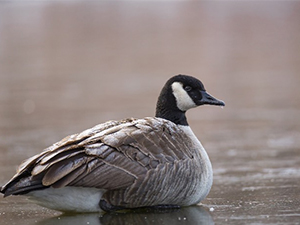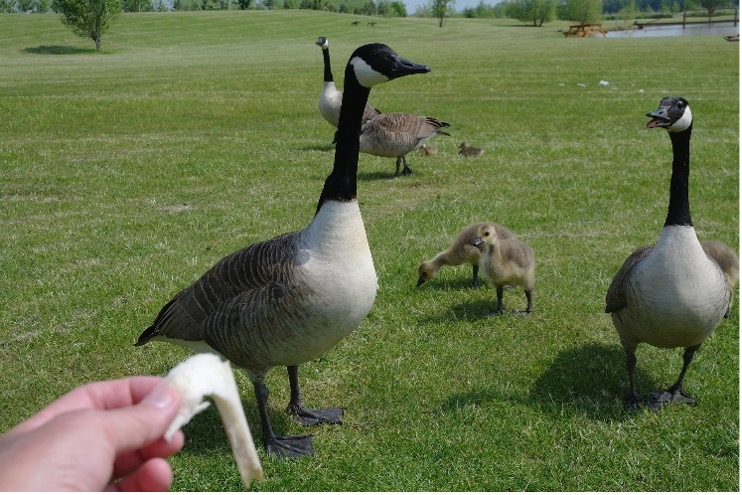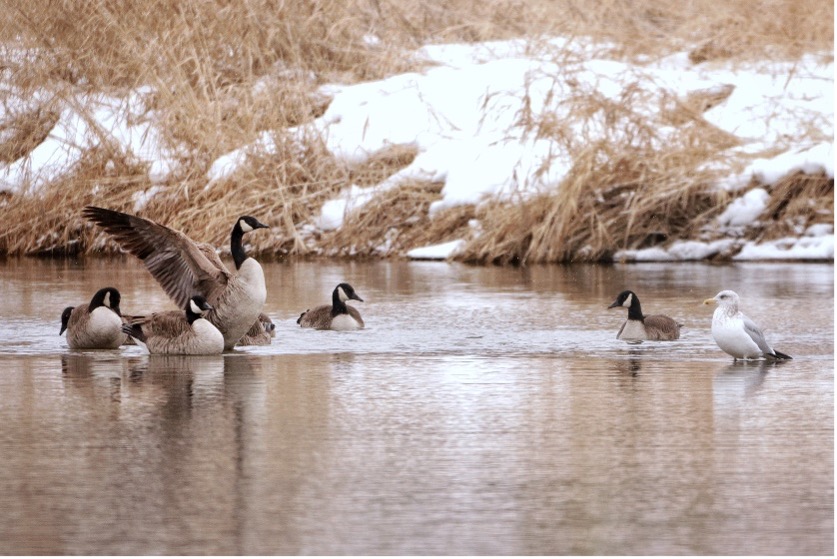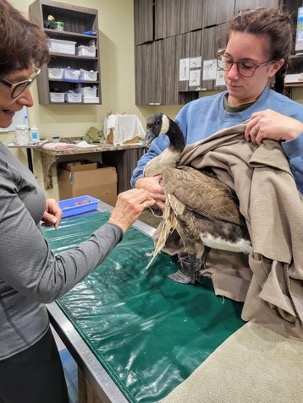How Do Geese Survive in the Winter Months?
Dec 6, 2022
The Canada geese habitat gradually becomes inhospitable during the fall and winter months and geese, along with countless other species, must migrate to warmer places to meet their dietary needs.
Although their natural migration is usually southward or toward lakes, in recent years the goose population has been steadily increasing in urban landscapes where plenty of food and open water is available year-round.
What Do Canada Geese Eat?
- Spring and Summer: The Canada goose’s diet in the spring and summer months mainly consists of grasses and sedges.
- Fall and Winter: In the Midwest, the climate becomes cold and snowy. This causes a natural change in their diet from grasses and sedges to berries and seeds.
- Year Round: In urban goose populations the availability of grasses often doesn’t change. With declining snowfall in recent winters, grass is readily available year-round.
Why Hand Feeding of Geese Is a Bad Idea

In many urban and suburban neighborhoods and parks, feeding ducks and geese with foods like bread or popcorn is a beloved habit. For many people, it’s a source of fun and satisfaction in thinking that they are helping these birds survive, especially during the long winter months.
Unfortunately, it’s a practice that does more harm than good. Foods such as bread and popcorn contain high amounts of carbohydrates, which are not a part of the natural goose diet. These foods are low in nutrition but filling, preventing geese from seeking out enough of the food they need to thrive.
These carbohydrates can also be a source of water pollution, harming everything else living in it. If you must feed the geese, stick to their regular diet – seeds, grasses and kale are acceptable – if you are looking to provide some winter feeding. Keep in mind however, that it is better for the geese, and the environment, to let them manage their own feeding.

Angel Wing & Other Perils of Feeding Geese
Angel wing is a condition suffered by goslings and other waterfowl as a result of the dietary deficiency that occurs when they are given bread while their wings are still developing. The condition is characterized by a weakening and contortion of the wing joint. Unless veterinary treatment is provided early, the condition is permanent and leaves the birds unable to fly – making migration impossible and escaping predators difficult.

Feeding geese can also cause them to become aggressive around humans and each other as they begin to compete for a limited food source.
Geese also tend to swarm areas where hand feeding occurs, which can lead to overpopulation and the spread of disease and pollution, affecting both the geese and the entire ecosystem.
Geese and other animals rely on natural instincts and the ability to adapt and survive in changing environments. Goose populations, especially those in urban areas, have no need of human help in meeting their dietary needs. Hand feeding has a negative impact on the digestive and overall health of the animals and the health of the environment around them. The best way to enjoy nature is to let it be natural.
Get Help with Your Bird Conflicts
At Wild Goose Chase Indy, our commitment to the well-being of birds is built in to our efforts to help businesses and property owners manage their bird conflicts, including problems caused by Canada geese.
We use biology-based strategies customized by species, location and season to ensure that our customers – and their customers – can enjoy the pleasures of sharing the environment with birds without the health and safety risks that bird conflicts create.
We work with property managers and business owners in residential, industrial and agricultural settings to provide safe, effective and humane strategies for bird control.
Reach out to our bird experts today to learn more about how Wild Goose Chase Indy can help manage goose-related conflicts in your area.
Contact us to learn more about our bird pest control services


 0
0
